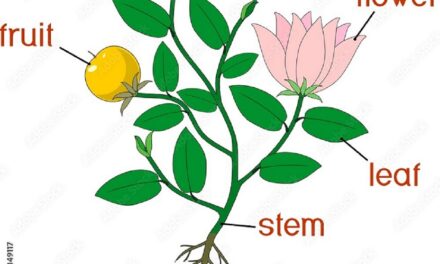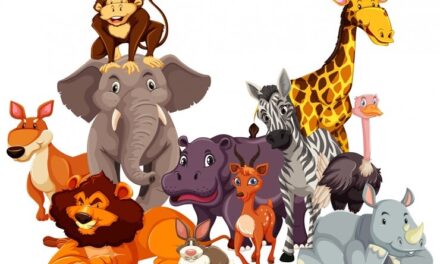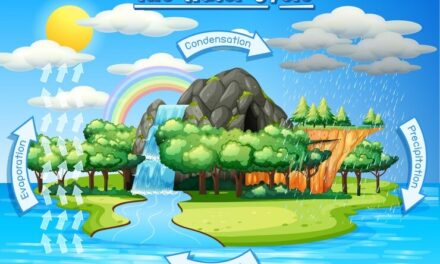These elements are all around us and play a huge role in our everyday lives. In this chapter, we’ll learn about how light and sound work, the role of energy, and how forces affect the world. Let’s dive in and discover the wonders of light, sound, and energy!
Light
Light is a form of energy that allows us to see the world around us. It travels in straight lines and can be reflected, absorbed, or transmitted through different materials.
What is Light?
Light is made up of tiny particles called photons. These photons travel in waves, and the way they move affects how we perceive light. The light we see with our eyes comes from various sources, such as the Sun, light bulbs, and torches.
– Sources of Light:
– Natural Light: Comes from the Sun, stars, and fire.
– Artificial Light: Comes from light bulbs, lamps, and electronic devices.
How Do We See Things?
Our eyes can detect light that is reflected off objects. When light hits an object, some of it bounces back into our eyes, allowing us to see the object. Here’s how it works:
- Light Source: Provides the light that travels to the object.
- Reflection: Light bounces off the object and travels to our eyes.
- Vision: The light enters the eyes and forms an image on the retina. The brain then processes this image, allowing us to see.
What is a Shadow?
A shadow is a dark area created when an object blocks light. Shadows are formed because light travels in straight lines and can’t pass through solid objects. Here’s how shadows are formed:
- Light Source: A source of light, like the Sun or a lamp.
- Object: An object that blocks the light.
- Shadow: The dark area formed on the opposite side of the object from the light source.
Examples:
– Sun Shadows: When you stand outside in the sunlight, your body blocks some of the sunlight, creating a shadow on the ground.
– Indoor Shadows: When you place an object in front of a lamp, it casts a shadow on the wall.
Sound
Sound is another form of energy that we can hear. It travels through the air (or other materials) as vibrations. When something vibrates, it causes the surrounding air to vibrate, and these vibrations reach our ears as sound.
How Does Sound Travel?
Sound travels in waves through a medium, such as air, water, or solid materials. Here’s a simple way to understand sound travel:
- Vibration: An object, like a drum, vibrates and creates sound waves.
- Transmission: The sound waves move through the air or another medium.
- Reception: Our ears detect these vibrations and send signals to the brain, which interprets them as sound.
How Do We Hear Sound?
Our ears are designed to detect sound waves and help us understand what we hear. Here’s how hearing works:
- Outer Ear: Collects sound waves and funnels them into the ear canal.
- Middle Ear: The sound waves cause the eardrum to vibrate. These vibrations are transferred to small bones called ossicles.
- Inner Ear: The vibrations reach the cochlea, a spiral-shaped organ filled with fluid. The fluid’s movement sends electrical signals to the brain.
- Brain: Interprets these signals as sounds.
Types of Sounds
Sounds can be different in pitch and volume:
– Pitch: How high or low a sound is. High-pitched sounds (like a whistle) have fast vibrations, while low-pitched sounds (like a drum) have slow vibrations.
– Volume: How loud or soft a sound is. Loud sounds have strong vibrations, while soft sounds have weak vibrations.
Energy
Energy is the ability to do work or cause change. Everything around us uses energy in some form, and it comes in different types.
What is Energy?
Energy can be found in many forms, such as light, heat, sound, and movement. Here’s a look at different types of energy:
– Kinetic Energy: The energy of movement. When you ride a bike, you have kinetic energy.
– Potential Energy: Stored energy. A ball held high above the ground has potential energy because it can fall.
– Thermal Energy: The energy of heat. When you touch a hot object, you feel thermal energy.
– Electrical Energy: Energy from electric currents. It powers our homes and devices.
How is Energy Used?
Energy is used in various ways to make our lives easier and more comfortable:
– Electricity: Powers lights, appliances, and electronic devices.
– Heat: Warms our homes and cooks our food.
– Movement: Helps us move things, like riding bikes or driving cars.
Force and Energy
Force is a push or pull that can change the motion of an object. It is closely related to energy because force can transfer energy from one object to another.
What is Force?
Force can cause an object to start moving, stop moving, or change direction. Here are some examples of force:
– Push: When you push a door open, you apply force to it.
– Pull: When you pull a toy, you are applying force to move it.
– Gravity: A force that pulls objects toward the Earth. It keeps us grounded and makes things fall.
How Force and Energy are Related
When you use force, you are using energy to make things happen. For example:
– Pushing a Cart: You use energy to push the cart, and the force moves it forward.
– Lifting a Box: You use energy to lift the box against the force of gravity.
The Role of Energy in Daily Life
Energy plays a crucial role in our daily activities and the functioning of the world. Here are some ways energy affects our lives:
– Cooking: We use energy from gas or electricity to cook food.
– Transportation: Cars, buses, and trains use fuel (energy) to move us from one place to another.
– Entertainment: TVs, computers, and games use electrical energy to provide entertainment.
Conserving Energy
It’s important to use energy wisely and avoid wasting it. Here are some tips for conserving energy:
– Turn Off Lights: Turn off lights when you leave a room.
– Use Energy-Efficient Appliances: Choose appliances that use less energy.
– Conserve Water: Use less hot water to save energy used in heating it.
– Unplug Devices: Unplug chargers and electronics when they are not in use.
The worksheet covers the following topics-
Light
What is a shadow?
How do we see things
Sound
Force/ energy

















